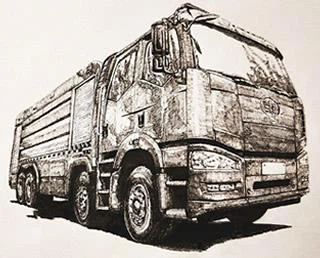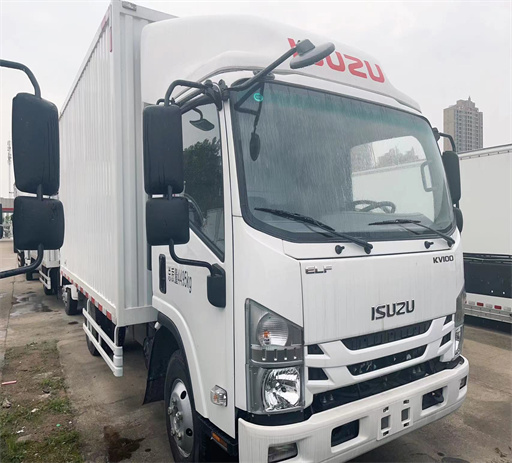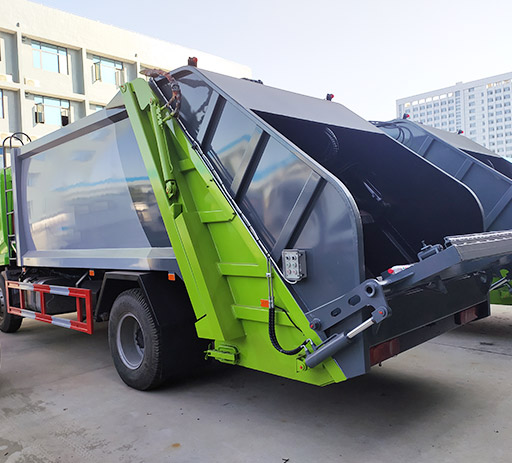Understanding Milk Tanker Trucks: The Lifeline of Dairy Transport

Milk tanker trucks play a crucial role in the dairy industry, ensuring that fresh milk is transported from farms to processing plants and distribution centers. These specialized vehicles are designed to meet the stringent hygiene requirements and ensure the safe transport of liquid dairy products. This article delves into the various aspects of milk tanker trucks, including their design, operation, regulations, and more.

Table of Contents
- What is a Milk Tanker Truck?
- Design and Specifications
- Types of Milk Tanker Trucks
- How Milk Tanker Trucks Operate
- Hygiene and Safety Regulations
- Maintenance of Milk Tanker Trucks
- Challenges in Milk Transportation
- The Future of Milk Tanker Trucks
- Frequently Asked Questions
What is a Milk Tanker Truck?
A milk tanker truck is a specialized vehicle designed for the transportation of milk. These trucks carry liquid milk from dairy farms to processing facilities where it can be pasteurized, packaged, and distributed. Given the perishable nature of milk, these trucks must be equipped with temperature control systems to maintain optimal freshness during transport.
Design and Specifications
The design of milk tanker trucks is critical to ensuring the safety and quality of the milk during transportation. The key specifications include:
Shape and Size
Milk tankers are typically cylindrical to facilitate easy cleaning and maintenance. They come in various sizes, usually ranging from 1,000 gallons to over 8,000 gallons, depending on the demand and delivery logistics.
Material Used
Most milk tanker trucks are made of stainless steel due to its resistance to corrosion, high hygiene standards, and ease of cleaning. This material helps preserve the quality of the milk throughout the transport process.
Insulation and Temperature Control
Effective insulation is essential. Most milk tankers are equipped with temperature control systems to keep the milk chilled, typically between 34°F to 38°F (1°C to 3°C). This helps prevent bacterial growth and spoilage.
Loading and Unloading Mechanisms
Milk tanker trucks often use pump systems for loading and unloading. A sanitary loading or unloading connection is vital to maintaining hygiene and quality during the process.
Types of Milk Tanker Trucks
There are various types of milk tanker trucks designed for specific purposes:
Road Tankers
These are standard trucks with large tank containers mounted on the chassis. They are primarily used to transport milk over long distances.
Farm Tankers
Farm tankers are smaller units that transport milk from the farm to local processing plants. They are usually less than 2,000 gallons in capacity.
Dedicated Milk Transport Vehicles
Some companies use specialized trucks that are only dedicated to milk transport to ensure there is no contamination from other products.
How Milk Tanker Trucks Operate
Understanding the operation of milk tanker trucks involves several key steps:
Collection of Milk
After milking, the milk is stored in bulk tanks at the farm. Tanker trucks arrive to pump the milk into their tanks using a hygienic process.
Transport
During transport, the milk tanker truck maintains a controlled environment to keep the milk fresh. Drivers monitor temperature and ensure that the truck is clean and fully operational.
Delivery
Upon arrival at the processing facility, the milk is unloaded through pump systems, again ensuring that sanitary standards are met. The facility will then pasteurize and package the milk before distribution.
Hygiene and Safety Regulations
Due to the nature of the product being transported, strict regulations guide the hygiene standards for milk tanker trucks:
Cleaning Procedures
Milk tankers must undergo rigorous cleaning and sanitization procedures after each delivery. This includes using hot water and detergents approved by relevant health authorities.
Health Inspections
Regular health inspections are mandatory to ensure compliance with safety regulations. These inspections include checking temperature control, cleanliness, and overall equipment condition.
Quality Control Measures
Quality control is enforced at various stages including collection, transport, and delivery. On both ends, tests can be conducted to ensure the milk meets the required quality standards.
Maintenance of Milk Tanker Trucks
Regular maintenance is essential to keep milk tanker trucks in proper working condition:
Daily Checks
Drivers should perform daily checks, including examining hoses, pumps, and the overall integrity of the tank to prevent leaks and contamination.
Scheduled Maintenance
Regular maintenance schedules should be followed, including inspections of the insulated tanks, diesel engines (if applicable), and safety equipment like brakes and lights.
Cleaning Protocols
Adhering to a strict cleaning protocol ensures hygiene and prolongs the lifespan of the equipment. This includes cleaning the interior before and after loading milk.
Challenges in Milk Transportation
The transportation of milk is not without its challenges:
Temperature Control
Maintaining a consistent temperature during transit can be difficult, especially in extreme weather conditions. Drivers need to monitor temperatures continuously.
Hygiene Compliance
Ensuring that all aspects of the transport meet hygiene and safety standards is an ongoing challenge that requires diligence from all parties involved.
Logistical Issues

Routing, scheduling, and managing deliveries can be complex, especially in regions with dispersed dairy farms. Efficient logistics planning is essential for minimizing delays and maintaining product quality.
The Future of Milk Tanker Trucks
The future of milk tanker trucks will likely see advancements in technology and sustainability:
Automation and AI
Advancements in automation and AI could streamline routing and improve efficiency, as well as enhance temperature monitoring and reporting systems.
Eco-Friendly Options
With increasing environmental concerns, the industry may shift towards more eco-friendly vehicles, such as electric or hybrid milk tanker trucks, reducing the carbon footprint.
Smart Technologies

Implementing smart technologies such as IoT sensors could further enhance monitoring capabilities, ensuring real-time data is readily available for better decision-making.
Frequently Asked Questions
1. How is milk transported from farms to processing plants?
Milk is transported using specialized milk tanker trucks equipped with insulated tanks and temperature control systems to ensure it stays fresh and safe during transport.
2. What materials are milk tankers made of?
Milk tankers are primarily made of stainless steel due to its hygiene benefits, resistance to corrosion, and ease of cleaning.
3. How often do milk tanker trucks need maintenance?
Regular maintenance is essential, including daily checks, and scheduled inspections to ensure the safety and hygiene of the equipment.
4. What temperature must milk be kept at during transportation?
Milk should be transported at temperatures between 34°F to 38°F (1°C to 3°C) to prevent spoilage and bacterial growth.
5. Why is hygiene so important in milk transportation?
Due to the perishable and sensitive nature of milk, maintaining strict hygiene standards prevents contamination and ensures the safety and quality of dairy products.
6. What advancements are being made in milk tanker technology?
Future advancements may include the use of automation, AI for routing optimization, and the development of eco-friendly transport options to reduce the industry’s carbon footprint.
